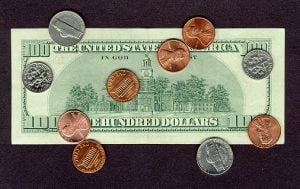
Published here on-line in March of 1998, this computer science novel explores the consequences of weaknesses in the cryptographic protocols used for Electronic Funds Transfers (EFT) world-wide.
While the book is certainly a work of fiction, the author has carefully researched the subject and has made some effort to make the story plausible. The result is a chillingly-real suspense tale that does not shy aware from technical details. While the author has blended actual well-known people and events into the story, the principals in the story are ficticious — any similarity to actual people, living or dead, is coincidental.
The plot of The Electronic Money Mill is a work of fiction. On the other hand, the technical material regarding EFT’s, Computer Science, Key Escrow laws, and cryptology in general, are very real. In short, the setting is real; the story is not.
It should be pointed out that the laws and the science of cryptology are changing rapidly. As time passes, the material in the Electronic Money Mill is likely to become dated. For this reason, it should be emphasized that the edition appearing on this site (which is the only edition to date) was published in March, 1998.
The book is available on-line for free. You may download the book from this site and you may distribute it freely. All we ask is that you not modify the content in any way and
that, in particular, the cover page be included with all distributions. Furthermore, you must not profit from distribution of this book. All rights are reserved. Published here on the Web, March 1998.
The book is approximately 180 pages. It is available for download in postscript format. Sorry, postscript is the only format available at this time.

Some readers may want to skim Chapter 4 and Chapter 17. Both of these chapters are highly technical. Chapter 4 is a review of modern cryptology while Chapter 17 presents a flaw in ANSI X9.17 — Standard for Electronic Funds Transfers for Wholesale Banking. There is very little in the way of plot developments in either of these chapters. It is the author’s hope that these chapters can be treated as “techno-babble”… albeit accurate techno-babble.
Readers more familiar with cryptology may find Chapter 17 enlightening. Readers unfamiliar with cryptology but anxious to learn more about the subject, may find Chapter 4 to be a pleasant
introduction to this fascinating field.
With the growing popularity of the Internet, computer security has become a greater concern today than it was just five years ago. The Electronic Money Mill speaks directly to the most
pressing security problems facing large corporations today as businesses struggle to take full advantage of the public Internet and private Intranets.
Written to both educate and entertain, this book will appeal to students, computer professionals, and economists. It is a must for anybody working in the areas of Electronic Banking, Electronic Commerce, Computer Security, and Internet applications.
